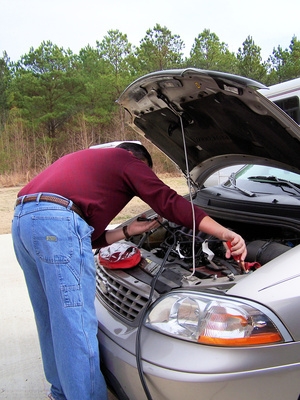
The chemicals found within an automotive battery generate electricity when the ignition switch is turned on. These currents of electricity then travel through the wires to start the vehicle. Although car batteries come in a wide variety of shapes and sizes, the components and chemicals in all batteries are generally the same.
A standard 12-volt automotive battery contains six cells that are connected to one another. These cells are filled with an electrolyte made up of sulfuric acid and water (H2SO4). When the ignition is turned on, this chemical mixture generates an electrical current that travels through the wires. Sulfuric acid is colorless, odorless and highly corrosive. Car batteries are one of very few products for consumers containing sulfuric acid.
Within the automotive battery are positive plates made up of lead dioxide (PbO2). The positive plates are alternated with negative plates in the battery to create a charge. Sheets are placed within each plate to prevent the plates from touching. Lead dioxide is odorless, dark-brown in color and appears crystal-like. In automotive batteries, lead dioxide mixes with the sulfuric acid to produce lead sulfate and water.
In order for a battery to function properly, it also needs a negative charge. The negative plates within a battery are made up of straight lead (Pb). Automotive batteries generally contain one extra set of negative plates to balance the charge of the battery.
The battery case is made from polypropylene (PP) which is used to create almost all consumer plastics. Polypropylene is excellent for battery casing as it does not melt below 320 degrees Fahrenheit (160 degrees Celsius).